A first in every sense of the word
Bremont unveils the ultimate aviation watch, incorporating original material from the 1903 Wright Flyer, plus its first in-house movement.
What makes the ultimate aviation-inspired watch? Bremont has pondered the question for years. Mechanically, it would have to be outstanding. Just as importantly, as with previous Bremont Limited Editions, it would have to incorporate a remarkable piece of history. In historical terms, what could be more remarkable than an original part of the first ever powered aircraft? The 1903 Wright Flyer was built and designed by the Wright brothers themselves in Dayton, Ohio, USA. It’s the invention and aircraft that changed the way we live today and it has now inspired our latest, and perhaps most unique, limited edition timepiece.
Bremont is honoured to announce the unveiling of the Limited Edition Bremont Wright Flyer on the 23rd July 2014 at the Science Museum in London. The new timepiece will feature some of the original fabric used on the 1903 Wright Flyer aircraft. Just as significantly, it showcases Bremont’s first ever in-house movement, the BWC/01, designed and developed in Britain. Many of its constituent parts have also been crafted at the company’s workshops in Henley- on-Thames. The 25 jewel, 33.4mm movement features a 50+ hour power reserve, Glucydur balance and a hairspring adjusted via a micro-metric screw. Utterly reliable and extremely robust, the BWC/01 is elegant and beautifully finished, with a central hour and minute hand and a running second hand at 9 o’clock.
This unique project was only made possible by the Wright family’s passion for Bremont’s aviation heritage. According to family member Amanda Wright Lane:
“Our partnership with Bremont on the Limited Edition Wright Flyer watch is a natural fit. Bremont’s dedication to historical themes, particularly in aviation, demonstrated by their iconic limited edition watches, all incorporating genuine historic artefacts, caught our attention immediately. As a top quality watchmaker, the brand is a perfect fit for the Wright brothers’ legacy. The wing cloth from the 1903 Wright Flyer is considered almost priceless by some, but we felt Bremont’s passion for aviation heritage made them a suitable choice for this rare use of the cloth. The Bremont Wright Flyer is a stunning way to launch our brand in international markets and is sure to become one of the most valuable watches ever made.”
Nick English, Co-Founder of Bremont agreed.
“Giles and I still cannot believe that it’s happened. Holding the original and invaluable muslin used to cover the 1903 Wright Flyer is incredibly emotive. The Wright family has been wonderful to work with and it was inspiring to see their passion for the project. Does the creation of a special aviation-inspired watch really get any better than this? Probably not. The combination of this amazing material and our new BWC/01 movement has resulted in a truly mind-blowing timepiece.”
Proceeds from the limited edition line will help to restore the Wright Family home in Dayton, Ohio to its former glory.
THE WRIGHT FLYER: HISTORY TAKES TO THE SKIES Next time you see an airliner soar overhead, or watch wartime footage of aircraft furiously defending European skies, cast your mind back to where it all began. One cold December day way back in 1903, the Wright Flyer became the world’s first successful powered flying machine.
It was the ground-breaking invention of two brothers from Dayton, Ohio. Wilbur and Orville Wright were not scientists. They did not even graduate from high school. And unlike other inventors of the period, they received no sponsorship to fund their endeavors. Yet through sheer perseverance and ingenuity, they became the first to master the principles of controlled flight. It was the catalyst for an incredible century of aviation development that continues into the 21st century. Their pioneering techniques and systems remaining a fundamental part of modern aircraft design to this very day.
Iconic machines like the Spitfire, Concorde and even the Space Shuttle all owe a debt to the Wright Flyer, a humble biplane made of spruce and fabric. The Wright Brothers and their remarkable Wright Flyer truly made history - and continue to do so.
THE 1903 WRIGHT FLYER: THE FIRST FLIGHT The morning of 17 December, 1903 dawned grey and cold. A strong north-easterly wind buffeted icy puddles amongst the dunes. But by 10:30 the Flyer was positioned on its launching rail with the engine running. John T Daniels, a local man who assisted the brothers, recalled the moment before take off:
“After a while they shook hands, and we couldn’t help notice how they held on to each other’s hand, sort o’like they hated to let go; like two folks parting who weren’t sure they’d ever see each other again.”
At 10:35, Orville released the restraining wire. The flying machine travelled along the rail with Wilbur running alongside to hold the wing steady. As it launched into the air, Daniels fired the camera and captured that iconic moment. The Flyer lurched up and down as Orville desperately attempted to counteract the pitching movement. A downward pitch ended the flight, but he touched down safely after travelling 120 feet in 12 seconds.
That winter’s day on a windswept beach at Kitty Hawk, North Carolina, history was made. And the aeronautical age had begun.
In designing and piloting the world’s first powered flying machine, Wilbur and Orville Wright became the first to turn mankind’s dreams into a reality. Their fascination for flight had begun in childhood and as adults they had watched as other pioneers tried, and failed, to master the skies.
Wilbur believed that a lack of proper control was their downfall and set out to solve the issue. He hit upon wing- warping, using control wires to twist the wings and turn the machine. The brothers then began testing glider designs, adding an elevator to control pitch and finally mastering yaw with a vertical rudder.
Their 1902 glider featured the very first three-axis control system, which remains an essential element of every modern aircraft. And with the addition of a small engine and two propellers, their remarkable 1903 Wright Flyer became the first machine to finally conquer the air.
DAMAGED BEYOND REPAIR The brothers made three more flights in the Wright Flyer, each one progressively longer and more controlled. On the fourth flight Wilbur covered 852 feet in 59 seconds, but after carrying the machine back to the launch site at Kitty Hawk, disaster struck. Orville recorded the fateful day in his diary.
“We set the machine down a few feet west of the building, and while standing about discussing the last flight, a sudden gust of wind struck the machine and started to turn it over. All rushed to stop it”.
When the wind finally released the Flyer, the legendary biplane was damaged beyond repair. Its short but illustrious career was over.
“Success four flights Thursday morning all against twenty one mile wind started from level with engine power alone average speed through air thirty one miles longest 57 seconds inform press home Christmas. Orevelle Wright”.
THE WRIGHT BOTHERS’ LEGACY By 1906 the brothers had developed their invention into a practical aircraft and were ready to sell the design. Preferring to work in secret, their achievements had largely been ignored by the press. So it took a full three years to silence the doubters and convince the world their claims were true. The desired sales contracts soon followed and by 1909 they had become world-famous American heroes, piloting Wright Flyer displays across the globe to an adoring public enamoured with all things aeronautical.
The Wright Company was formed in 1910 to manufacture their aircraft, yet only two years later Wilbur contracted typhoid and died aged just 45. Without his beloved brother, Orville lost his motivation and sold the company in 1915. He remained a key figure in aviation circles and by his death in 1948 had witnessed an incredible evolution in aircraft design, thanks in no small part to the remarkable work he and Wilbur had carried out.
THE WRIGHT FLYER LANDS AT THE SCIENCE MUSEUM When the Smithsonian Institution in Washington DC credited the Langley Aerodrome, a 1903 machine that failed to fly, as the ‘first man-carrying aeroplane in the history of the world capable of sustained free flight’, Orville was furious.
Naturally, he considered it an outrageous slight on the brothers’ legacy. In protest, he loaned their great American aeronautical achievement to the Science Museum in 1928 claiming that, “I regret more than anyone else that this course of action is necessary”. America’s loss was Great Britain’s gain and the 1903 Wright Flyer spent two decades exhibited in London.
During World War II, the Flyer was moved away from the Blitz to the safety of an underground vault far away from the city. Then, in 1942, the Smithsonian finally changed its stance and credited the Wright Flyer as history’s first powered, piloted aeroplane. Before returning the Flyer to the USA, the Science Museum created a replica to put on display.
Orville did not live to see the Wright Flyer take pride of place in the Smithsonian. At the grand opening ceremony, the British Ambassador Sir Oliver Franks commented: “It is a little as if we had before us the original wheel”.
THE FABRIC: FROM THE FIRST MEN IN THE AIR TO THE FIRST MAN ON THE MOON Following the incident at Kitty Hawk, the Flyer was crated up and stored in a Dayton basement. When the Miami River burst its banks in 1913, the basement flooded leaving the aircraft sat in mud and water for eleven days. In 1916 Orville repaired and restored it for a series of static displays, leaving only the outer wing panels covered in the original unbleached Pride of the West muslin, hand-stitched in place by Wilbur himself. A further restoration in 1925 replaced the entire fabric, yet when Orville passed away in 1948 his family discovered that he had kept large portions of the 1903 muslin.
Over time, small parts of that fabric have been donated to aeronautical friends and institutions. Its importance to aviation history was aptly recognised in 1969, when Neil Armstrong took man’s first steps on the moon carrying a piece in his spacesuit pocket.
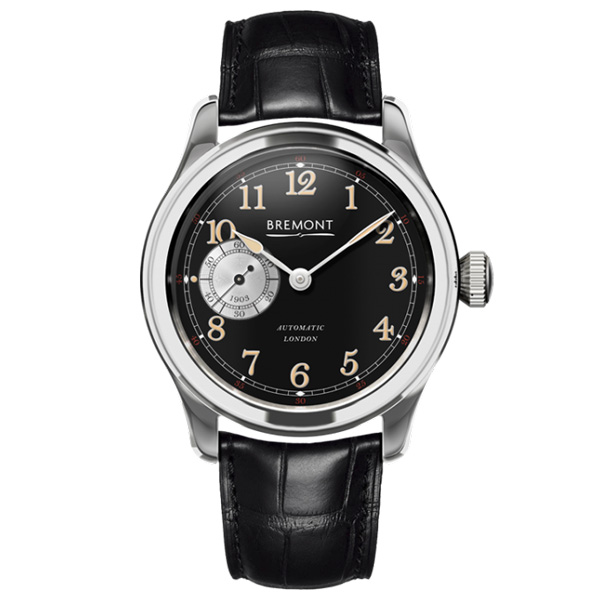
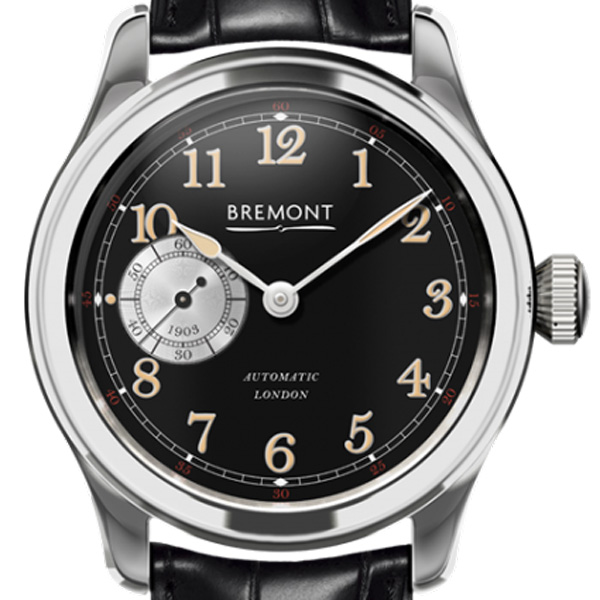
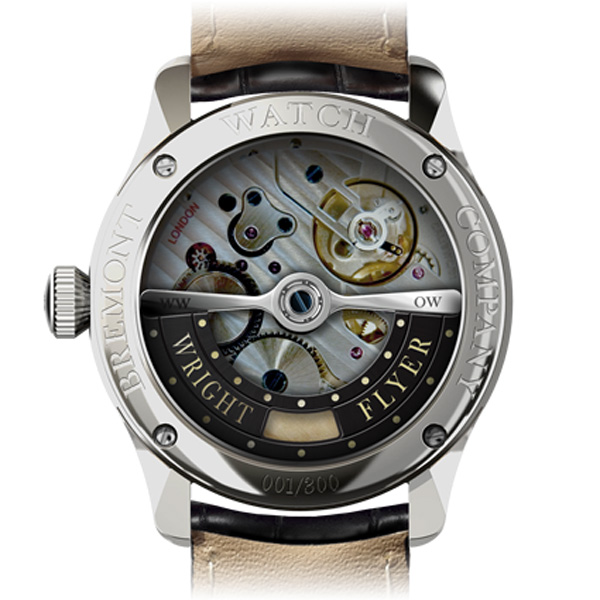
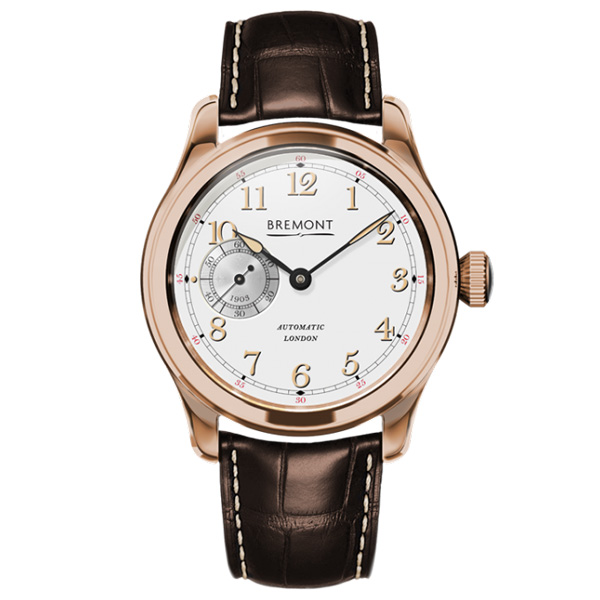
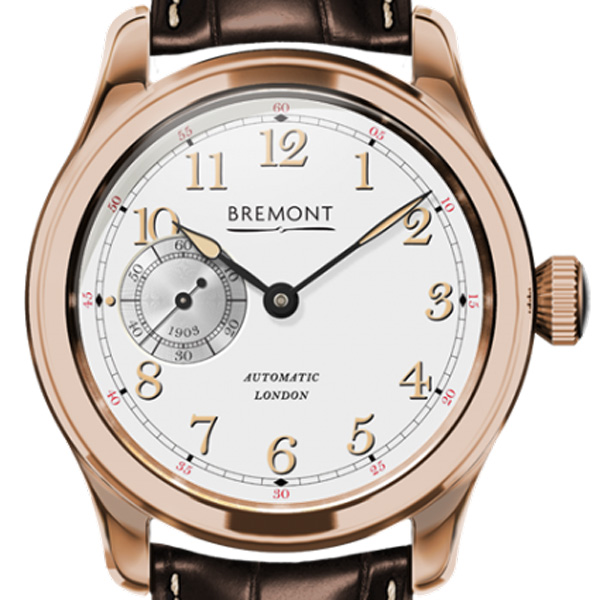
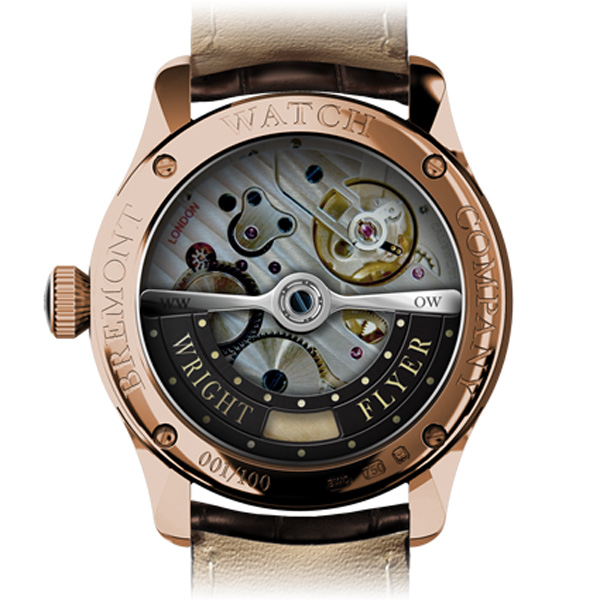
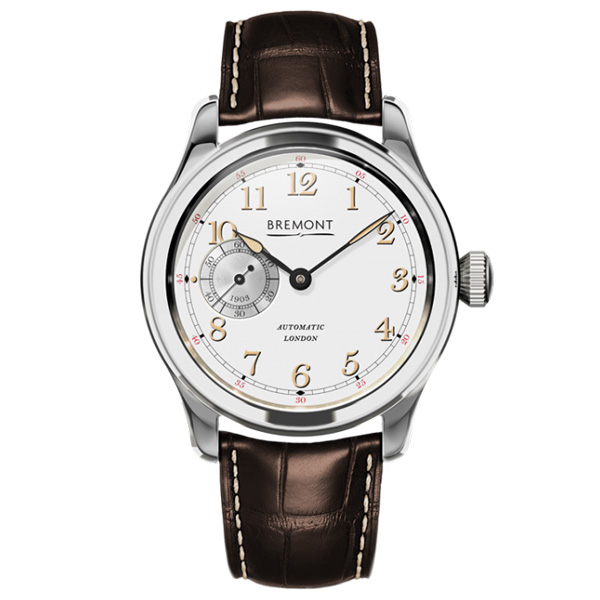

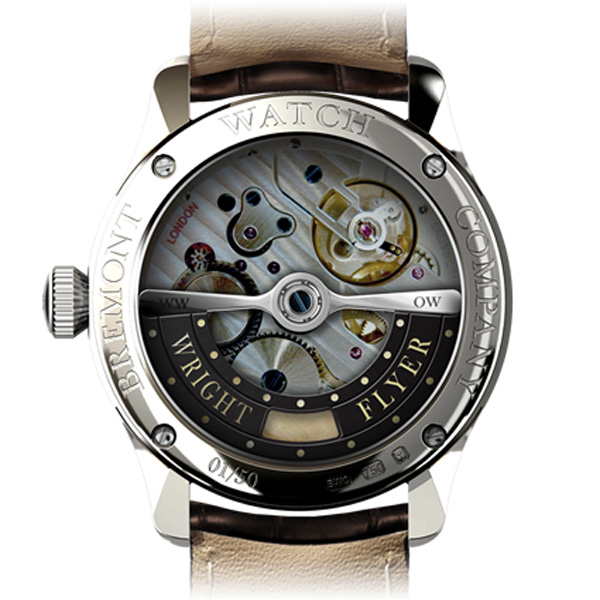

You do not have access to view this Atom.
ROTOR Each Bremont Wright Flyer Limited Edition rotor will feature some of the original muslin material used to cover the 1903 Wright Flyer aircraft. The muslin will be layered between the period decorated rotor plate and a sapphire crystal window.
CASE Available in polished stainless steel, rose gold or white gold. All versions feature Bremont’s Trip-Tick® case construction with integrated decoration ring. 43mm case diameter with standard 22mm lug width and a case thickness of 14mm including the crystal.
CASE BACK Exhibition type with integrated domed crystal, secured with 4 polished headed screws. Engraved markings with specific limited edition serial number.
DIAL Metal dial with black or white base colour, decorated with period numerals and Wright Flyer date specific ‘1903’ sub-dial. Bespoke Bremont SuperLumiNova® luminous coating.
HANDS Central hour and minute hand with a running seconds hand at 9 o’clock.
CRYSTAL Domed anti-reflective, scratch resistant sapphire crystal.
WATER RESISTANCE Water resistant to 10 ATM, 100 metres.
STRAP Alligator strap with pin buckle to complement case material.
THE BWC/01 MOVEMENT
Bremont BWC/01 33.4mm Automatic with 25 jewels, Glucydur balance, Nivarox CT balance spring and Nivaflex 1 mainspring. Highly efficient double reverser bi-directional winding mechanism to achieve 28,800bph and 50+ hour power reserve. The BWC/01 is elegant and beautifully finished with many of its constituent parts being crafted at Bremont’s workshops in Henley-on-Thames.




